Dust-up over southern quarry’s impact on housing plan
Health concerns have been raised about the impact of dust from a Sellicks Beach quarry on a planned 1700-home development announced by the Malinauskas Government, amid ongoing complaints from existing residents.

The floating dust and air quality concerns relate to a roughly 134 hectare plot of rural land in Sellicks Beach that the state government began the process of rezoning in July 2023.
The rezoning formed part of the government’s “record land release” announcement in February 2023 to create space for 23,700 new homes across the northern and southern suburbs.
But Onkaparinga Council and local residents have raised concerns that floating dust from the nearby Sellicks Hill Quarry could negatively affect the Sellicks Beach housing development.
The 261-hectare quarry, which produces limestone, shale, marble and dolomite, is managed by Adelaide-based concrete giant Adbri and regulated by the Department for Energy and Mining and the Environment Protection Authority (EPA).
It is located between 500-metres and 2km from the land earmarked for thousands of new residents.
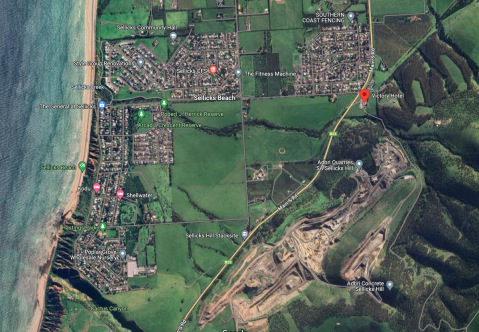
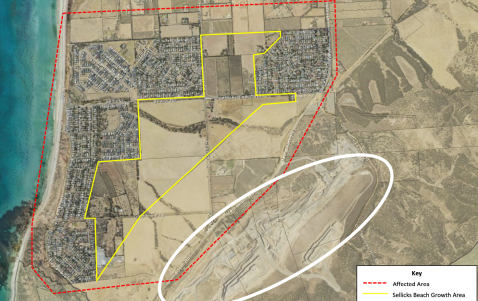
Residents living in the already established part of Sellicks Beach have voiced concerns about the impact of floating dust on their homes, particularly during summer when the wind is blowing towards the coast.
Photos supplied by residents from the last 12 months show dust covering roofs, solar panels, cars and windows. Onkaparinga Mayor Moira Were said this year’s “extended dry summer and autumn” led to an increase in dust complaints.
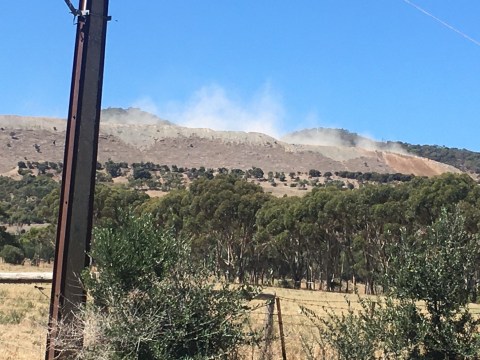
You might like
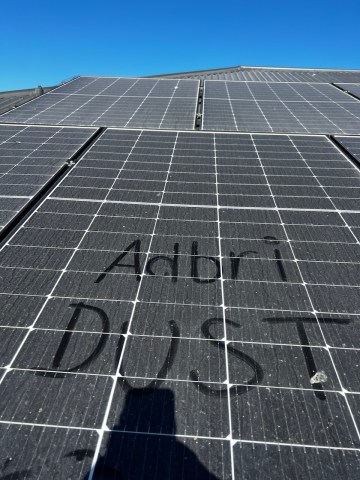
Were wrote to the State Planning Commission in April warning that “without actions to correct the issue now, an increase in housing in Sellicks Beach will only increase complaints relating to dust impacts”.
“Council has over many years received ongoing concerns and complaints from Sellicks Beach residents about excessive dust generated from quarry activities covering the surrounding homes and land,” Were wrote, following a request from the council.
“In turn, this had led to negative amenity and potential health impacts on residents in the wider Sellicks Beach area.
“We appreciate the economic importance of the quarry in providing building material for South Australia, however to date, we have unfortunately not seen an appropriate level of intervention to minimise impacts from the quarry on our community.”
The state government put out a call this week for a private consultant to conduct an “air quality assessment” of the Sellicks Beach land.
The air quality investigation, to be conducted over the summer and completed by May 2025, is needed to “identify the level of public health impact and amenity to assist in planning to protect future residents”, according to government tender documents.
“There have been a number of matters raised by the Sellicks Beach community regarding dust generated at the Sellicks Hill Quarry, operated by Adbri,” the tender states.
“Investigations are required to ensure that future residents are not adversely impacted by air emissions and that the quarry is able to continue to operate consistent with their licence if the proposed Code Amendment (rezoning) were to be approved.”
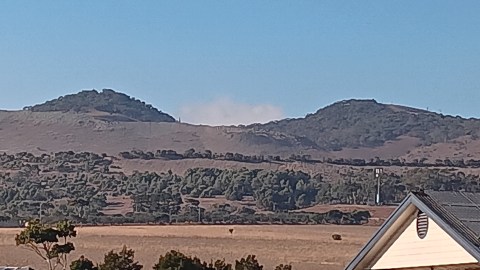
The procurement documents also outline that “most of the area” earmarked for new housing is separated by more than 500-metres from the quarry.
“Whilst this suggests that the new master planned residential community will be sufficiently separated from the quarry to avoid intolerable impacts from quarry noise and dust, further investigations are required to consider potential impacts,” the tender states.
The government is also asking the successful contractor to “determine the need for any potential planning constraints and/or mitigations measures” should the rezoning proceed “to ensure that adequate levels of residential air quality and public health can be achieved”.
The floating dust concerns in Sellicks Beach represent another challenge to the Malinauskas Government’s ambitious plan to rezone large swaths of land in the outer suburbs for new housing, with issues over infrastructure provision and land remediation proving significant.
Stay informed, daily
After last year touting the construction of 23,700 new homes across Concordia, Dry Creek, Hackham and Sellicks Beach, Premier Peter Malinauskas last month declared these projects and others were “all at risk” without a $1.5 billion plan to increase SA Water’s spending on new infrastructure.
Meanwhile, the Dry Creek saltpans, earmarked for 10,000 new homes in Adelaide’s inner northern suburbs, also face substantial issues related to land remediation amid projections the site will be inundated by climate change induced sea level rise by 2100.
InDaily asked Planning Minister Nick Champion’s office whether the Sellicks Beach rezoning would be delayed by the investigations into air quality and floating dust.
Champion is currently on leave, but a spokesperson said in a statement: “Community consultation and targeted stakeholder engagement are important inputs to any code amendment application.”
“The government takes all community feedback and external reports seriously when assessing an area for rezoning for residential development purposes.
“Consultation for the Sellicks Beach Code Amendment is expected to open in June 2025. It is anticipated that the area would be construction ready in December 2029, as referenced in the Housing Roadmap.”
InDaily also contacted the EPA asking whether there had been an increase in dust from the Sellicks Hill Quarry.
The spokesperson said the Department for Energy and Mining (DEM) and the EPA “are aware of community concerns related to dust in the area” and were assessing a new “Dust Management Plan” submitted by Adbri.
“DEM and the EPA have jointly investigated the concerns raised and are working together closely to deliver a rigorous co-regulatory approach at this site,” the spokesperson said.
“This approach gives us a better understanding of community concerns and will allow us to effectively monitor dust levels and minimise impacts on existing and future residents in the area.
“The agencies are currently assessing Adbri’s revised Dust Management Plan, as required in its EPA Licence 2052, to further reduce volumes of dust produced and leaving the quarry site.”
A spokesperson for quarry owner Adbri said the company has recently established a “Sellicks Quarry Community Consultation Group” led by an independent chair to discuss the quarry and share information.
“We also continue to invest in all aspects of our operations, including dust mitigation measures,” the Adbri spokesperson said.
“These has resulted in multiple areas of the plant being enclosed to reduce any potential dust impacts, as well as water carts used on site as required.
“Results from onsite dust monitoring confirms the quarry operates within its licence conditions.”
Onkaparinga Mayor Were told InDaily the quarry has an expected life of up to 160 years and needed to be properly managed, but the council supported both the mine and the new housing development.
“We’re pleased to note that our advocacy led to the EPA undertaking additional dust monitoring and the DEM advising us of future consultation on quarry activities,” she said in a statement.
“We’re confident the EPA and DEM will take note of this investigation for their own reviews and hope the results of the testing will influence management practices that could potentially reduce impacts on residents.”








